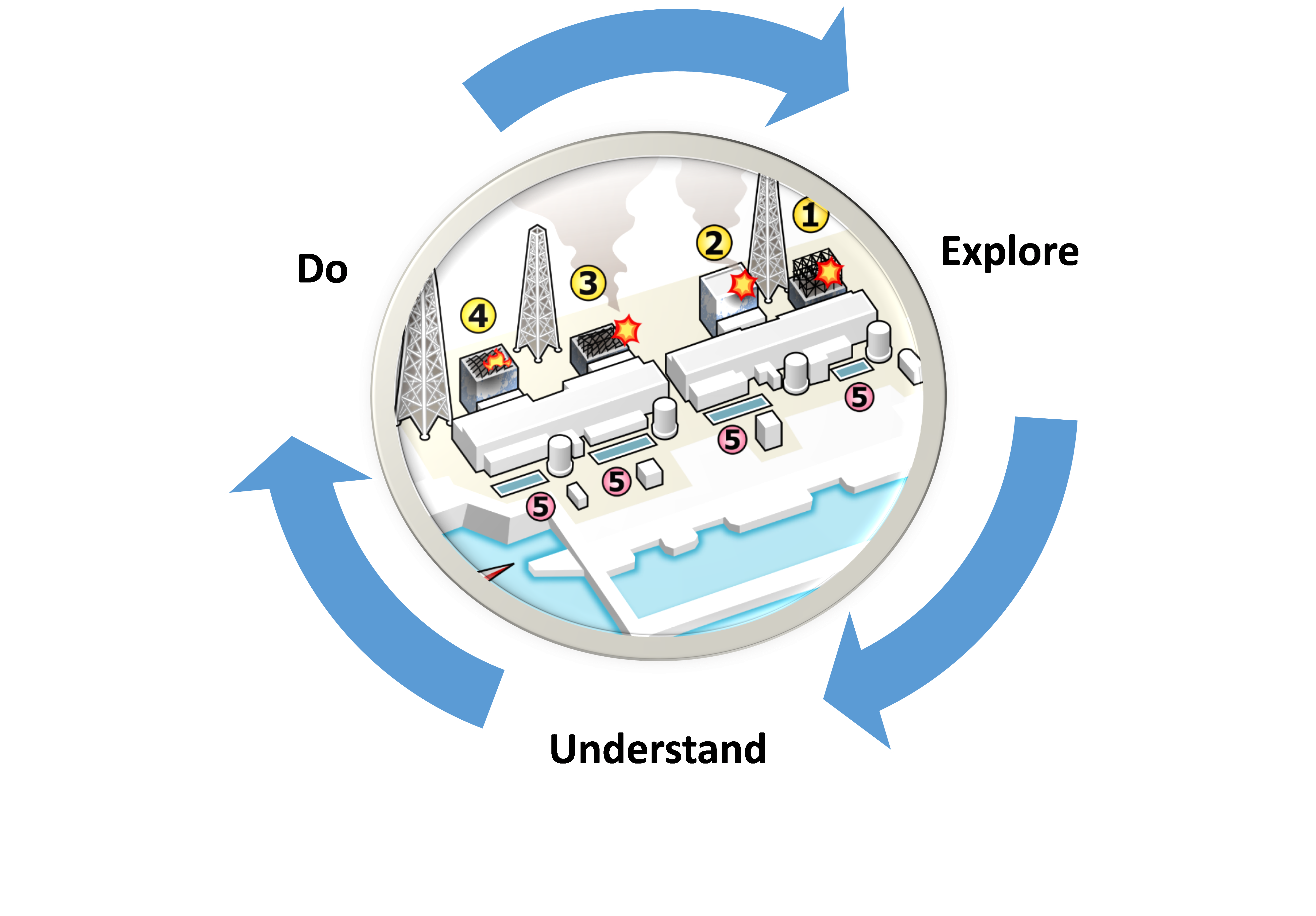Interdisciplinary teaching of safety: Adopting the Fukushima I nuclear disaster case
Leiden University scholars developed a new bachelor course on safety examining the Fukushima case by adopting an interdisciplinary perspective and an innovative teaching approach.
On 11 March 2011 the nuclear Fukushima disaster unfolded in Japan in the days after the Tōhoku earthquake and following tsunami, which both plagued Japan’s East coast. Due to an unexpected combination of those two extreme events, the Fukushima I (or ‘Dai-Ichi’) nuclear power plant suffered from severe damages. The 9.0 magnitude earthquake caused a loss of power and the following tsunami – over twelve meters at the plants site – caused the failure of on-site emergency power generators and other plant utilities. Over the next three days, insufficient cooling of the fuel rods resulted in nuclear core meltdowns in three of the four Boiling Water Reactors and hydrogen explosions damaged reactor buildings. Necessary venting and drying out of spent fuel pools provoked the release of extensive radioactive materials into the atmosphere, endangering people and the environment. A mandatory evacuation zone up to 20 km radius affected over 80,000 residents (Kushida, 2012). Nowadays the Fukushima I power plant area is still largely abandoned, as a consequence of high residual radiation levels. One of the major concerns now relates to radioactive material contaminating ground water, which seeps into the Pacific Ocean. What can we learn from the Fukushima I disaster?
A new course on safety in the ISGA bachelor ‘Security Studies’ addressed the issue of learning from the Fukushima case. In a series of 14 lectures together with several experts in the field and around 120 students, two safety scholars of ISGA examined the Fukushima case in details. The case was approached from an interdisciplinary perspective, integrating insights from public administration, engineering, environmental studies, and communication theory, in order to obtain a full picture of the events. What was the chain of events? What caused the disaster to happen? What lessons can we learn from it? Could a similar disaster happen in the Netherlands and, more generally, in the European framework?
Although yet a large number of studies have been conducted on the Fukushima case, little of these studies have adopted an interdisciplinary perspective. In this course an innovative teaching approach was adopted, following the three-step learning model ‘Explore -> Understand -> Do’ to structure the analysis of the Fukushima I case. Exploring means providing a fundamental background and to familiarize with the timeline of events. Understanding was achieved by elaborating on the theoretical models related to safety and crisis. Doing was related to the application of knowledge to prevent similar events and discussion of organizational learning after the disaster.

While it was a challenge to transmit concepts from a wide range of safety-related disciplines to bachelor students and to safeguard the soundness and coherence, this new course set up also provided us with some interesting educational insights. The clear advantage of dealing with a relevant real-life safety case is that it makes abstract theories concrete and lectures stimulating, feeding continuous interaction between students, teachers and professional experts. Another added value is that students are introduced to a variety of disciplines, learning to approach problems from different perspectives and conceptual lenses. This created a network of interdisciplinary scholars working on safety, which allowed developing some interesting ideas for future research, industrial collaborations, and scientific publications. In the perspective of providing methods and tools to support future disasters prevention, it is worth extending this course experience.
Gabriele Landucci and Wout Broekema, safety scholars at the Institute of Security and Global Affairs, lectured the ‘Case study Fukushima’ bachelor-I course this year (February-March).



.jpg)